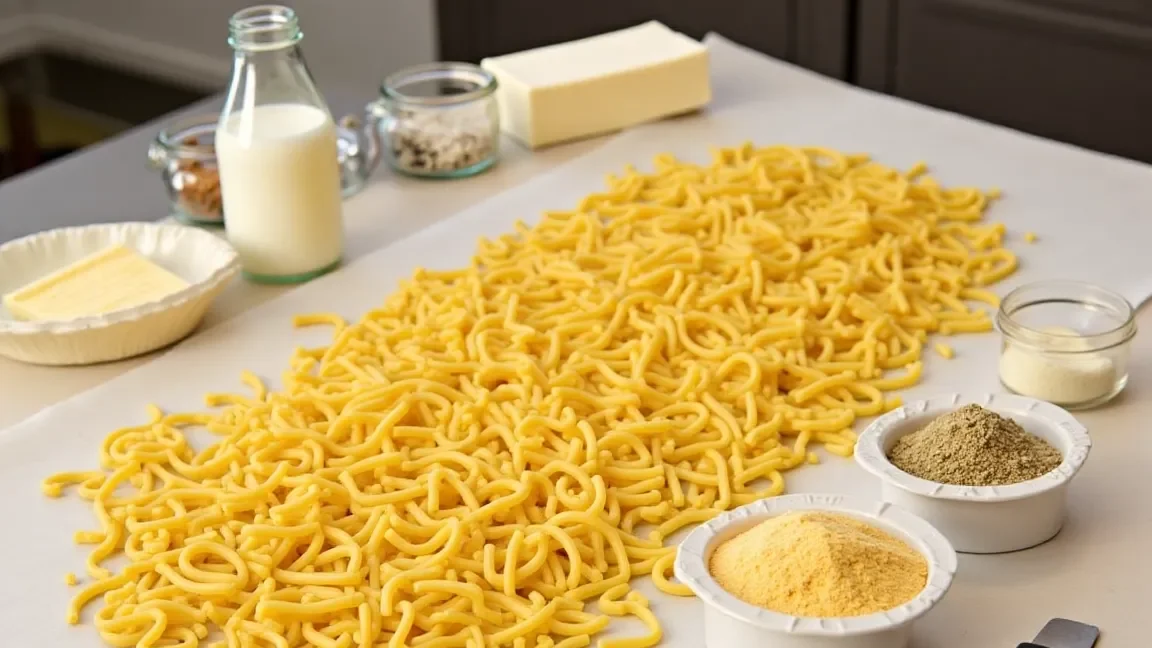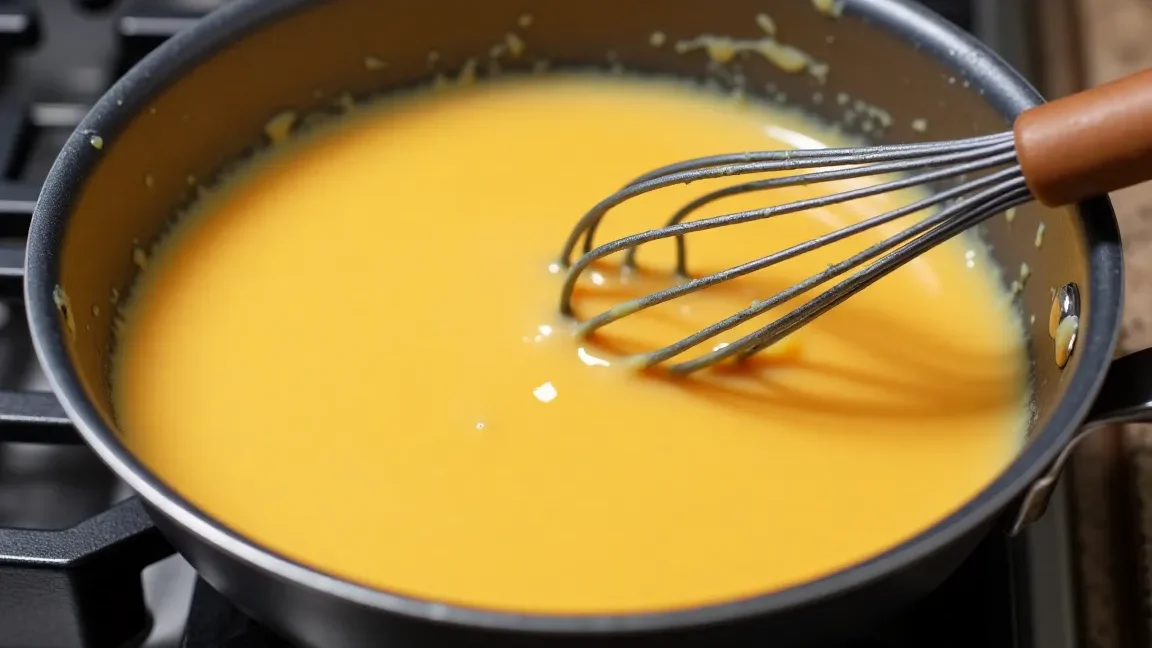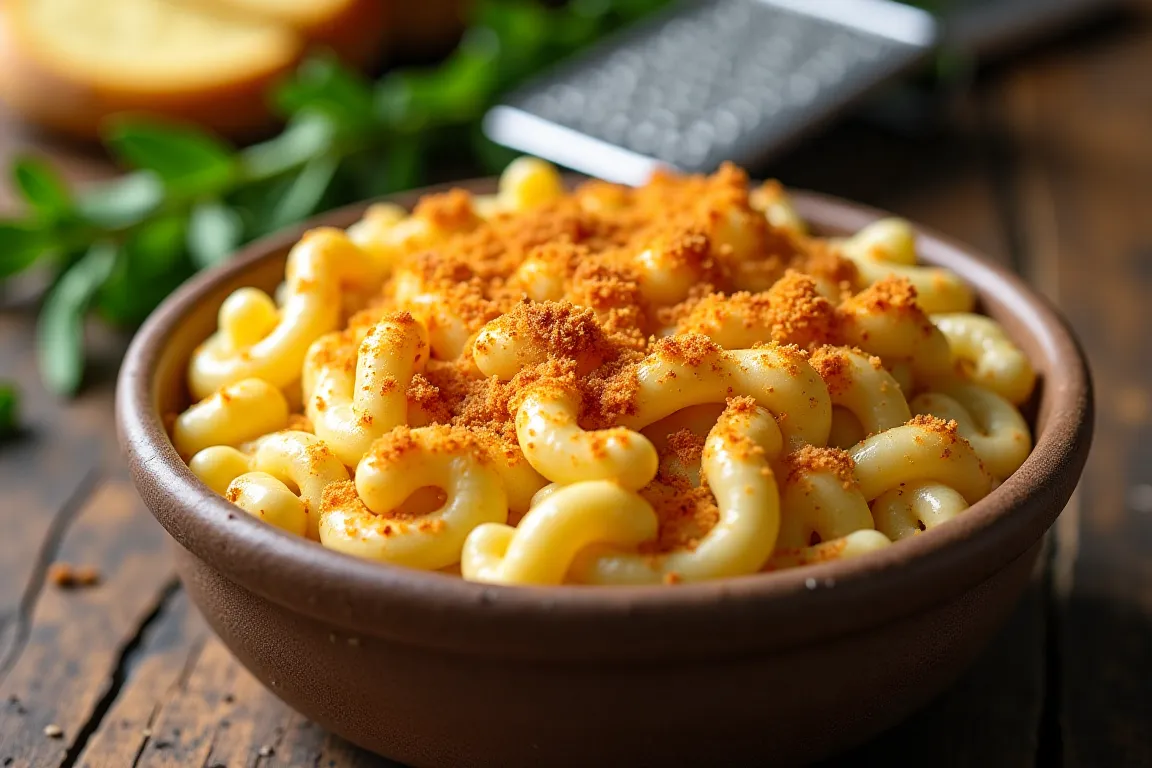This guide teaches you how to make Tinis Mac and Cheese recipe , a creamy and cheesy pasta dish. We’ll cover the ingredients, how to prepare them, step-by-step instructions, and tips for the best results. We’ll also explore variations and answer common questions.
Table of Contents
Understanding Mac and Cheese Basics
Types of Mac and Cheese
Mac and cheese comes in many forms. A simple version uses just pasta, cheese, and milk. Gourmet mac and cheese might add beef bacon, cheeses, or spices.
Choosing the Right Pasta
The best pasta shape for mac and cheese is usually elbow macaroni. Other small shapes work well, too. Avoid long pasta like spaghetti.
Cheese Selection
Cheddar cheese is popular. For different tastes, you can also use other cheeses like Gruyere or Monterey Jack. Mixing cheeses creates interesting flavours.
Cooking Methods
Mac and cheese can be made on the stovetop, or in the microwave. Stovetop mac and cheese is quicker. Baked mac and cheese gets a nice, crispy top. The cooking method changes the texture.
Stovetop Mac and Cheese
Stovetop cooking makes a creamy sauce.
Baked Mac and Cheese
Baking adds a browned, crusty top layer.

The ‘Tinis’ Twist: Unique Ingredients in Tinis Mac and Cheese Recipe
Special Flavor
This recipe’s special touch comes from unique ingredients. They give the mac and cheese a distinct, delicious flavour. We blend cheeses, herbs, and a hint of vinegar for a tangy kick. The vinegar isn’t overpowering; it balances the richness of the cheese.
Ingredient Breakdown
The cheese blend includes sharp cheddar, Gruyere, and a little Parmesan. Gruyere adds a nutty taste, while Parmesan provides a salty sharpness. The herbs—a mix of thyme and rosemary—give a subtle, earthy flavour.
Ingredient Substitutions
Feel free to experiment! If you don’t have Gruyere, try another Swiss cheese. Monterey Jack is a good substitute. You can also change the herbs. Try a little oregano or sage for a different taste. If you prefer a milder flavour, skip the vinegar completely.
How it Works with the Cheese Sauce
The herbs and vinegar add complexity to the creamy cheese sauce. They don’t overpower the cheese but complement its richness, creating a more interesting taste. The vinegar’s slight acidity cuts through the richness of the cheese, making the sauce less heavy.
Essential Ingredients: Quality and Quantity
Pasta
| Ingredients | Quantity | Note |
|---|---|---|
| Elbow Macaroni | 1 pound | Choose a good quality brand. |
Cheese
| Ingredients | Quantity | Note |
|---|---|---|
| Sharp Cheddar | 1 cup, shredded | A sharp cheddar gives a strong flavor. |
| Gruyere | ½ cup, shredded | Adds a nutty taste. If you don’t have it, try another Swiss cheese. |
| Parmesan | ¼ cup, grated | Adds a salty sharpness. |
‘Tinis’ Ingredients
| Ingredients | Quantity | Note |
|---|---|---|
| Thyme | 1 teaspoon | Fresh thyme is best. |
| Rosemary | ½ teaspoon | Adds a subtle, earthy flavor. |
| Vinager | 1 teaspoon | Balances the richness of the cheese. Skip if you prefer a milder flavor. |
Milk/Cream and Butter
| Ingredients | Quantity | Note |
|---|---|---|
| Milk or Cream | 1 cup | Whole milk or heavy cream works well. |
| Butter | 2 tablespoons | Use unsalted butter. |
Seasonings
| Ingredients | Quantity | Note |
|---|---|---|
| Salt | To taste | Add salt at the end of cooking. |
| Black Pepper | To taste | Freshly ground black pepper is best. |
Making the Cheese Sauce: Creamy Perfection
Melting Cheese Smoothly
First, melt the butter in a pan. Then, add the milk or cream. Stir constantly over medium heat. This prevents burning. Slowly add the shredded cheese, a little at a time. Stir until the sauce is smooth and the cheese has completely melted.
Avoiding Lumps
Stirring constantly is key to preventing lumps. Use a whisk for best results. If lumps form, don’t worry! Continue stirring gently. The heat will help melt them.
Achieving Creamy Consistency
For a creamy sauce, use whole milk or heavy cream. They add richness. Add a bit more milk if the sauce is too thick. If it’s too thin, cook it longer to thicken it.
Temperature Control
Keep the heat at medium. Low heat takes too long. High heat can scorch the sauce. The goal is a gentle simmer.
Adding the ‘Tinis’ Twist
Once the cheese is melted, stir in the thyme, rosemary, and vinegar. The herbs add flavour, and the vinegar balances the richness of the cheese. Season with salt and pepper to taste. Your creamy cheese sauce is ready!

Cooking the Pasta: Al Dente and Beyond
Perfect Pasta Cooking
Cooking pasta perfectly is key to great mac and cheese. The Italian word “al dente”, which means “to the teeth”, is used in this context. It means the pasta is cooked but still firm to the bite.
Water and Pasta Ratio
Use plenty of water—at least 6 quarts for 1 pound of pasta. This prevents sticking.
Cooking Time
Follow the package directions for cooking time. Start checking the finishedness of your work a few minutes early.
Testing for Al Dente
Taste a piece of pasta. If it’s still a little firm in the centre, it’s al dente. If it’s too soft, it’s overcooked.
Draining the Pasta
Use a colander to drain the pasta. Don’t rinse it unless the recipe says to. The starchy water makes the sauce adhere to the pasta.
Preventing Sticking
Add the drained pasta immediately to your cheese sauce. Stir to coat. This prevents the pasta from sticking together.
Combining and Baking (if applicable): Bringing it Together.
Mixing Pasta and Sauce
Add the cooked pasta to the cheese sauce. Stir gently but well to coat every piece of pasta evenly. The pasta’s starchy water helps the sauce cling.
Baking Instructions (Optional)
Pour the pasta mix into a baking dish greased for mac and cheese. The dish size will depend on how much mac and cheese you make. Sprinkle extra shredded cheese on top if you like.
Baking Time and Temperature
Bake in a preheated oven at 350°F (175°C) for 20-25 minutes or until golden brown and bubbly. Keep an eye on it; ovens vary. Cover the dish loosely with foil if the top begins to brown too quickly.
Achieving a Golden Brown Crust
Extra time under the broiler (the top part of your oven) can create a crispier top. Watch closely to prevent burning. Turn off the broiler if it gets too brown. Allow the mac and cheese to rest for a couple of minutes before serving. It is easier to serve the cheese when it has been set.
Serving and Garnishing: Presentation Matters
Serving Suggestions
Serve your Tinis Mac and Cheese hot from the oven (if baked) or stovetop. Use a large serving bowl or individual ramekins for a nice presentation.
Garnishing Ideas
Simple garnishes will make your mac and cheddar look even more appealing. Try these ideas:
- Breadcrumbs: Sprinkle some breadcrumbs on the top to make it crunchy.Use panko or regular breadcrumbs.
- Fresh Herbs: A sprinkle of fresh thyme or rosemary adds colour and complements the flavours already in the dish.
- Extra Cheese: Grating extra Parmesan or cheddar cheese adds a cheesy finish.
- Beef Bacon Crumbles: Crispy beef bacon bits add a salty, smoky flavour and visual appeal.
Flavor Boosters
Add a simple garnish to enhance the taste. Add richness to your food with a drizzle of olive oil. Red pepper flake can add some heat. A little goes a very long way.
Troubleshooting and Tips for Success
Lumpy Sauce
Lumpy cheese sauce? Stir constantly as you melt the cheese. Use a whisk for best results. A little extra milk can help smooth it out.
Dry Pasta
Dry pasta means not enough water when cooking. Use at least 6 quarts of water for 1 pound of pasta. Before overcooking, check that the food is “al-dente”, or firm to the bite.
Burnt Crust
A burnt crust on baked mac and cheese happens when the oven is too hot or the baking time is too long. Lower the oven temperature or cover the dish with foil to prevent burning. A lower oven temperature will also allow for a more even baking of the cheese.
Tips for Success
Use good quality ingredients. Fresh herbs make a difference. If you don’t have Gruyère cheese, another Swiss cheese works. Taste and adjust seasonings as needed. Don’t be afraid to experiment! Adding a vinegar pinch or a little extra salt might improve the taste. If you love bold flavors, try mixing in Steakhouse Blue Cheese Dressing for a creamy, tangy twist. Remember that different ovens cook at slightly different temperatures and rates.
Frequently Asked Questions
What pasta works best?
Elbow macaroni is ideal, but other small pasta shapes work well. Avoid long pasta like spaghetti.
Can I substitute cheeses?
Yes! Try another Swiss cheese or Monterey Jack if you don’t have Gruyere. Try experimenting with different combinations of cheese.
What if I don’t like vinegar?
You can omit the vinegar entirely for a milder flavour.
How do I prevent lumps in the cheese sauce?
Stir constantly while melting the cheese, using a whisk for best results. A little extra milk can help smooth things out if lumps form.
What does “al dente” mean?
“Al dente” means the pasta is cooked through but still firm to the bite.
Why is my pasta sticking together?
Ensure you use plenty of water when cooking the pasta (at least 6 quarts for 1 pound). Add the drained pasta immediately to the cheese sauce and stir well.
My baked mac and cheese is burning!
Your oven might be too hot, or you’re baking it for too long. Lower the temperature or loosely cover the dish with foil.
What can I use to garnish?
Toasted breadcrumbs, fresh herbs (like thyme or rosemary), extra cheese, or beef bacon crumbles make great garnishes. Olive oil is a rich addition to any dish.
My cheese sauce is too thick/thin.
Add a little milk if it is too thick. If the meat is too thin, cook longer.
Can I make this recipe ahead of time?
The cheese sauce can be prepared in advance and stored in the fridge. Combine everything and cook the pasta right before serving.
Conclusion: Enjoy Your Delicious Mac and Cheese!
Serving and Sharing
Serve your Tinis Mac and Cheese hot. It tastes great from the oven (if baked) or stovetop. A big bowl is perfect for sharing, or use individual dishes for a nice presentation.
Recipe Variations
This recipe is a great starting point. Feel free to change things up! Add different cheeses, herbs, or beef bacon for extra flavour. Experiment to find your favourite combination.
This guide helps you make delicious Tinis Mac and Cheese. Follow the steps carefully and enjoy!
